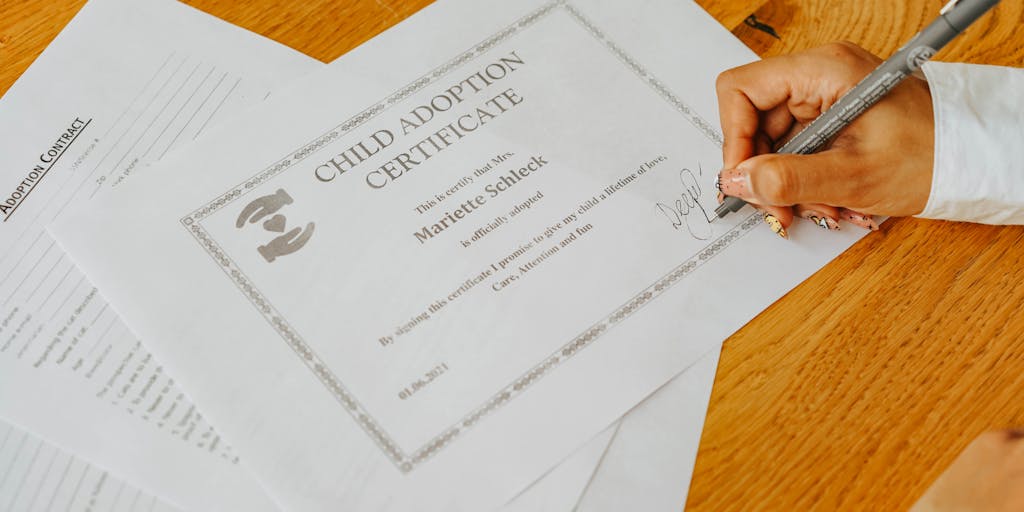When it comes to child support, many parents find themselves asking, “How much will I need to pay or receive?” In Alabama, the answer isn’t straightforward, as it depends on various factors. Understanding the nuances of child support can help you navigate this often complex landscape.
Understanding Child Support in Alabama

Child support is a legal obligation that one parent has to provide financial support for their child after separation or divorce. In Alabama, the primary goal of child support is to ensure that the child’s needs are met, which includes basic necessities like food, clothing, and shelter. But how is this amount determined?
In Alabama, child support is calculated based on the Income Shares Model, which considers both parents’ incomes and the needs of the child. This model aims to ensure that the child receives the same proportion of parental income that they would have received if the parents were living together. It’s a fair approach, but it can feel overwhelming if you’re not familiar with the process.
For many parents, the first step is to gather financial information, including income statements, tax returns, and any other relevant documents. This information is crucial for accurately calculating child support obligations.
Alabama Child Support Guidelines

Alabama has established specific guidelines to help determine the amount of child support owed. These guidelines take into account several factors, including:
- The income of both parents
- The number of children involved
- Healthcare costs
- Childcare expenses
- Any special needs the child may have
To get a clearer picture, you can use an Alabama child support calculator. This tool can provide a rough estimate based on your specific circumstances. For instance, if one parent earns significantly more than the other, the support amount will likely reflect that disparity.
According to the Alabama Child Support Guidelines, the basic support obligation for one child typically ranges from about $1,000 to $1,500 per month, depending on the combined income of both parents. However, this is just a starting point, and adjustments may be made based on additional expenses.
It’s also important to note that child support is not just a one-time calculation. It can be modified if there are significant changes in circumstances, such as a job loss or a change in the child’s needs. This flexibility is crucial for ensuring that the support remains fair and adequate over time.
In conclusion, understanding how child support is calculated in Alabama can empower you to make informed decisions. Whether you’re the paying or receiving parent, knowing your rights and obligations can help you navigate this challenging process. If you want to dive deeper into the specifics, consider checking out resources like this child support calculator or this comprehensive guide for more insights.
Factors Influencing Alabama Child Support Amounts
When it comes to determining child support in Alabama, several factors come into play. Understanding these factors can help you navigate the often complex landscape of family law. Have you ever wondered how your income or the number of children you have might affect your obligations? Let’s break it down.
Income Determination
Your income is one of the most significant factors in calculating child support. In Alabama, the courts typically look at both parents’ gross incomes to determine the support amount. This includes wages, bonuses, and any other sources of income. For instance, if you’re a single parent earning $50,000 a year, your child support obligation will differ significantly from someone earning $100,000.
Additionally, the state uses a formula that considers the combined income of both parents. This means that if your ex-partner has a higher income, your share of the support may be adjusted accordingly. It’s essential to be transparent about your financial situation, as any discrepancies can lead to complications down the line. For a more precise estimate, you can use the Alabama child support calculator.
Number of Children
The number of children you are supporting also plays a crucial role in determining the amount of child support. In Alabama, the support obligation increases with each additional child. For example, if you have one child, the support might be set at a certain percentage of your income, but if you have two or more children, that percentage typically increases. This is designed to ensure that each child receives adequate financial support.
Moreover, if you have children from multiple relationships, the courts will consider your total obligations when calculating support. This can sometimes lead to a complex situation where you need to balance your financial responsibilities across different households. Understanding how these calculations work can help you plan better and avoid any surprises. For detailed guidelines, you can refer to the Alabama Child Support Obligations document.
In summary, knowing how income and the number of children influence child support can empower you to make informed decisions. Whether you’re a custodial or non-custodial parent, being proactive about understanding these factors can lead to a smoother process and better outcomes for your children. If you have further questions, resources like the Alabama Child Support Enforcement Division can provide additional guidance.
When navigating the complexities of child support in Alabama, many parents find themselves asking, “How much should I expect to pay or receive for one child?” Understanding the various factors that influence child support calculations can help you prepare for this important financial responsibility. Let’s explore the key components that determine child support amounts in Alabama.
Child Care Costs
Child care costs can significantly impact the overall child support calculation. In Alabama, these expenses are often included in the child support guidelines. For instance, if you require daycare services while you work, these costs will be factored into the support amount. According to a study, the average cost of child care in Alabama can range from $200 to $1,000 per month, depending on the child’s age and the type of care needed.
It’s essential to keep in mind that both parents are typically responsible for these costs, and they may be divided based on each parent’s income. If you’re curious about how these calculations are made, you can find more detailed information in resources like this article on calculating child support in Alabama.
Health Insurance Premiums
Another critical factor in determining child support is health insurance premiums. In many cases, one parent may be required to provide health insurance for the child, and the cost of this insurance can be included in the child support calculations. For example, if you pay $300 a month for your child’s health insurance, this amount can be deducted from your gross income when calculating support obligations.
It’s worth noting that the court will consider the availability of health insurance and the associated costs when determining the final support amount. If you want to dive deeper into how health insurance impacts child support, you might find insights in this resource on child support in Alabama.
Custody Arrangement and Parenting Time
The custody arrangement and parenting time play a significant role in child support calculations. Generally, the more time a child spends with one parent, the less financial support that parent may be required to pay. This is because child support is designed to cover the costs associated with raising a child, and if one parent is providing more direct care, their financial obligations may be adjusted accordingly.
For instance, if you have a 50/50 custody arrangement, the child support payments may be lower than if one parent has primary custody. Courts often look at the parenting time schedule to ensure that the support amount reflects the actual time spent with the child. If you’re interested in understanding how custody arrangements can affect support payments, you can check out discussions on platforms like Quora for real-life experiences and insights.
In conclusion, determining child support for one child in Alabama involves a careful consideration of various factors, including child care costs, health insurance premiums, and custody arrangements. By understanding these elements, you can better navigate the financial responsibilities that come with parenting after separation or divorce. Remember, every situation is unique, so it may be beneficial to consult with a legal expert to get personalized advice tailored to your circumstances.
Alabama Child Support Calculator

When it comes to understanding child support in Alabama, the Alabama Child Support Calculator is an invaluable tool. Have you ever wondered how much you might be expected to pay or receive? This calculator takes into account various factors, including the income of both parents, the number of children, and any special needs the child may have. By inputting these details, you can get a clearer picture of what the court might determine as a fair amount.
For instance, if you’re a parent who has recently gone through a divorce, you might be feeling overwhelmed by the financial implications. The calculator can help you estimate your obligations, allowing you to plan your budget more effectively. It’s important to remember that while the calculator provides a guideline, the final decision rests with the court, which may consider additional factors such as health insurance costs and childcare expenses.
Alabama’s child support formula
Have you ever thought about how child support amounts are calculated? In Alabama, the child support formula is designed to ensure that children receive adequate financial support from both parents. This formula is based on the income shares model, which means it considers the combined income of both parents to determine the support amount. The idea is to maintain the child’s standard of living as if the parents were still together.
For example, if one parent earns significantly more than the other, the formula will adjust the support amount accordingly. This ensures that the child benefits from both parents’ financial resources. Additionally, the formula accounts for other expenses, such as healthcare and educational costs, which can significantly impact the overall support amount.
Understanding this formula can empower you as a parent. It allows you to advocate for a fair arrangement that meets your child’s needs while also considering your financial situation. If you’re curious about how this might apply to your specific circumstances, it’s worth consulting with a legal expert who can provide tailored advice.
Other Child Support Orders
Child support isn’t a one-size-fits-all situation. There are various child support orders that can be established based on individual circumstances. For instance, if a parent has a fluctuating income, the court may issue a temporary order that can be adjusted as needed. This flexibility can be crucial for parents who work in commission-based jobs or have seasonal employment.
Moreover, if a child has special needs, the court may order additional support to cover medical expenses or specialized care. This is where understanding the nuances of child support becomes essential. Have you considered how these factors might affect your situation? It’s important to stay informed and proactive about your rights and responsibilities.
In conclusion, navigating child support in Alabama can feel daunting, but with the right tools and knowledge, you can approach it with confidence. Whether you’re using the Alabama Child Support Calculator or understanding the intricacies of the child support formula, being informed is your best ally. If you’re looking for more resources on related topics, check out our articles on Best Instagram Advertising Agencies or Best Pinterest Marketing Agencies for insights that can help you in your journey.
Understanding child support can feel overwhelming, especially when you’re navigating the complexities of family law in Alabama. If you’re a parent trying to figure out how much you might owe or receive in child support for one child, you’re not alone. Let’s break it down together.
How To Calculate Your Alabama Child Support Payment
Calculating child support in Alabama involves a formula that considers several factors, including both parents’ incomes, the number of children, and any special needs the child may have. The state uses the Income Shares Model, which aims to ensure that children receive the same proportion of parental income as they would if the parents were living together.
To start, you’ll need to gather information about:
- Your gross income and that of the other parent.
- Any other sources of income, such as bonuses or rental income.
- Health insurance costs for the child.
- Childcare expenses necessary for the parent to work or attend school.
Once you have this information, you can refer to the Alabama Child Support Guidelines, which provide a table to help you determine the basic support obligation. For example, if the combined income of both parents is $5,000 per month, the guideline might suggest a support amount of around $800 for one child. However, this is just a starting point, and adjustments may be made based on specific circumstances.
It’s also important to note that the court may consider other factors, such as the child’s needs and the parents’ ability to pay. If you want to dive deeper into the specifics, you might find it helpful to consult with a family law attorney or use online calculators that can provide estimates based on your unique situation.
How child support is paid
Once the amount of child support is determined, the next question is often about how these payments are made. In Alabama, child support payments can be made in several ways, but the most common method is through income withholding.
Income withholding
Income withholding is a process where child support payments are automatically deducted from the paying parent’s paycheck. This method not only ensures that payments are made on time but also reduces the likelihood of missed payments. It’s a straightforward approach that many parents appreciate because it simplifies the process.
When a court orders child support, they typically issue an income withholding order to the employer of the paying parent. The employer is then responsible for deducting the specified amount from the paycheck and sending it directly to the Alabama Child Support Payment Center. This system helps maintain a consistent flow of support for the child, which is crucial for their well-being.
In some cases, parents may agree to make payments directly to each other, but this can lead to complications if payments are missed or disputes arise. Therefore, using the income withholding method is often recommended for clarity and reliability.
Understanding these processes can empower you as a parent, ensuring that you are prepared for what lies ahead. If you have more questions about child support or related topics, consider checking out resources like Best YouTube Marketing Agencies or Best Digital Marketing Podcasts for insights that can help you navigate your situation more effectively.
Actively sending payments
When it comes to child support in Alabama, understanding the process of actively sending payments is crucial for both parents. If you’re the non-custodial parent, you might be wondering how to ensure your payments are timely and correctly documented. The state of Alabama has established guidelines to help streamline this process.
Typically, child support payments are calculated based on the income of the non-custodial parent and the needs of the child. In Alabama, the Child Support Guidelines provide a formula that considers various factors, including the number of children and the income of both parents. For one child, the support amount can vary, but it’s essential to adhere to the court’s order to avoid complications.
One effective way to manage payments is through the Alabama Child Support Payment Center, which allows for electronic payments. This method not only ensures that your payments are received on time but also provides a record of your transactions. Have you ever thought about how electronic payments can simplify your financial responsibilities? It’s a game-changer!
Additionally, keeping open communication with the custodial parent can help in understanding any changes in the child’s needs or circumstances. This proactive approach can foster a cooperative relationship, which is beneficial for the child’s well-being.
Modification/Termination of Child Support Payments
Life is full of changes, and sometimes those changes necessitate a modification or termination of child support payments. Have you experienced a significant change in your financial situation, such as a job loss or a substantial increase in income? In Alabama, either parent can request a modification of child support if there’s been a change in circumstances.
To initiate this process, you’ll need to file a petition with the court. It’s important to gather evidence that supports your claim, such as pay stubs, tax returns, or documentation of any new expenses related to the child. The court will review the evidence and determine whether a modification is warranted. This can feel daunting, but remember, the goal is to ensure that the child’s needs are met fairly.
Termination of child support is another aspect to consider, especially when the child reaches the age of majority or becomes emancipated. In Alabama, child support typically ends when the child turns 19, unless there are special circumstances. If you believe that the conditions for termination have been met, it’s essential to formally request this through the court to avoid any future obligations.
Enforcement and Compliance with Alabama Child Support Orders
Ensuring compliance with child support orders is vital for the financial stability of the custodial parent and the child. Have you ever wondered what happens if the non-custodial parent fails to make payments? Alabama has several enforcement mechanisms in place to address non-compliance.
One of the most common methods is wage garnishment, where a portion of the non-custodial parent’s paycheck is automatically deducted to cover child support payments. This process not only ensures that payments are made but also alleviates the burden of having to chase down payments. It’s a practical solution that many parents find reassuring.
Additionally, Alabama can impose penalties for non-compliance, including suspension of driver’s licenses or professional licenses. This can serve as a strong motivator for parents to fulfill their obligations. If you’re facing challenges with compliance, it’s crucial to seek legal advice to explore your options and understand your rights.
Ultimately, the goal of these enforcement measures is to prioritize the child’s needs and ensure that they receive the support they deserve. By understanding the enforcement process, you can better navigate the complexities of child support in Alabama.
Understanding child support can feel overwhelming, especially when you’re navigating the complexities of family law in Alabama. If you’re a parent trying to figure out how much you might owe or receive in child support for one child, you’re not alone. Let’s break down the process and what you need to know.
How to request child support

Requesting child support in Alabama is a straightforward process, but it does require some steps to ensure everything is handled correctly. Whether you’re a custodial parent seeking support or a non-custodial parent wanting to establish your obligations, knowing the right approach can make a significant difference.
If you need to establish paternity
Establishing paternity is often the first step in requesting child support, especially if the parents were not married at the time of the child’s birth. In Alabama, paternity can be established through several methods:
- Voluntary Acknowledgment: Both parents can sign a form acknowledging paternity at the hospital or later at a local health department.
- Court Order: If there’s a dispute, you may need to file a petition in court, where DNA testing can be ordered to confirm paternity.
Once paternity is established, the custodial parent can then proceed to request child support. This can be done through the Alabama Department of Human Resources or by filing a petition in family court. It’s essential to gather all necessary documentation, such as income statements and any relevant expenses related to the child, to support your case.
If you’re both already legal parents
If both parents are legally recognized, the process of requesting child support becomes a bit more straightforward. You can initiate a child support order through the Alabama Department of Human Resources or file a petition in family court. Here’s what you need to consider:
- Income Calculation: Alabama uses a formula based on both parents’ incomes to determine the amount of child support. This formula considers various factors, including health insurance costs and childcare expenses.
- Shared Parenting Time: If you share custody, the amount may be adjusted based on the time each parent spends with the child.
- Modifications: If your financial situation changes, you can request a modification of the child support order. This is important to ensure that the support amount remains fair and manageable.
It’s crucial to keep communication open between both parents during this process. Working together can lead to a more amicable arrangement, which ultimately benefits the child. If you’re unsure about the calculations or need assistance, consider consulting with a family law attorney who can provide guidance tailored to your situation.
Understanding child support can feel overwhelming, especially when you’re navigating the complexities of family law in Alabama. If you’re a parent seeking support for your child, you might be wondering how much you can expect to receive or pay. In Alabama, child support is typically calculated based on guidelines that consider both parents’ incomes and the needs of the child. Let’s dive into some essential aspects of filing for child support and what you need to know.
Tips for filing your case
Filing for child support is a crucial step in ensuring your child’s needs are met. Here are some practical tips to help you through the process:
- Gather Documentation: Before you file, collect all necessary documents, including income statements, tax returns, and any existing custody agreements. This information will be vital in determining the appropriate support amount.
- Understand the Guidelines: Familiarize yourself with Alabama’s child support guidelines. The state uses a formula that considers both parents’ incomes and the number of children involved. Knowing these guidelines can help you set realistic expectations.
- Consider Mediation: If possible, try to resolve child support issues amicably through mediation. This approach can save time and reduce conflict, making the process smoother for everyone involved.
- Consult a Lawyer: If you’re unsure about the process or your rights, consulting a family law attorney can provide clarity. They can guide you through the legalities and help you present your case effectively.
By preparing thoroughly and understanding the process, you can navigate your child support case with greater confidence.
Asking for an amount that differs from the guideline
Sometimes, the standard child support guidelines may not reflect your family’s unique circumstances. If you believe that the guideline amount is too high or too low, you can request a deviation. But how do you go about this?
First, it’s essential to present a compelling reason for your request. For instance, if you have significant medical expenses or if your income fluctuates due to seasonal work, these factors can justify a different amount. You might also consider the child’s specific needs, such as educational expenses or special care requirements.
When making your case, be prepared to provide evidence. This could include documentation of your expenses, proof of income changes, or any other relevant information. The court will review your request and determine whether a deviation is warranted based on the evidence you provide.
Remember, the goal is to ensure that the child’s needs are met while also considering the financial realities of both parents. If you’re unsure how to approach this, seeking advice from a family law attorney can be invaluable.
When you might not get a support order
While many parents successfully obtain child support orders, there are situations where you might not receive one. Understanding these scenarios can help you manage your expectations and plan accordingly.
- Parental Rights Issues: If a parent has lost their parental rights or is not legally recognized as a parent, they may not be obligated to pay child support.
- Incarceration: If the non-custodial parent is incarcerated, it may complicate the ability to enforce a support order. However, this doesn’t eliminate the obligation entirely.
- Voluntary Agreement: Sometimes, parents may agree to a different arrangement outside of court. While this can work, it’s essential to formalize any agreements to avoid future disputes.
- Financial Hardship: If the non-custodial parent can demonstrate significant financial hardship, the court may decide not to impose a support order or may reduce the amount.
It’s crucial to understand that child support is designed to ensure the well-being of the child. If you find yourself in a situation where a support order may not be granted, consider discussing your circumstances with a legal professional who can provide guidance tailored to your situation.
How to change child support
Life is full of changes, and sometimes those changes necessitate a reevaluation of child support arrangements. Whether you’ve experienced a change in income, job status, or even the needs of your child, understanding how to modify child support in Alabama is crucial. So, how do you go about it?
First, it’s important to know that child support orders can be modified under certain circumstances. In Alabama, you can request a modification if there’s been a significant change in circumstances. This could include a job loss, a substantial increase in income, or changes in the child’s needs, such as medical expenses or educational requirements.
The process typically begins with filing a petition for modification with the court that issued the original child support order. You’ll need to provide evidence supporting your claim for a change. This might include pay stubs, tax returns, or documentation of your child’s new needs. It’s often beneficial to consult with a family law attorney to navigate this process effectively.
Once the petition is filed, a hearing will be scheduled where both parents can present their case. The court will then decide whether to modify the child support amount based on the evidence presented. Remember, the goal is to ensure that the child’s best interests are prioritized.
For more detailed guidance, you might want to check out resources that discuss family law and child support modifications.
Keeping track of payments and expenses
Managing child support payments can sometimes feel overwhelming, especially when juggling various expenses. How do you keep everything organized? Tracking payments and expenses is essential not only for your peace of mind but also for ensuring compliance with court orders.
One effective method is to maintain a detailed record of all payments made and received. This can be done through a simple spreadsheet or even a dedicated app designed for tracking child support. Make sure to include:
- The date of each payment
- The amount paid
- The method of payment (check, bank transfer, etc.)
- Any additional expenses related to the child, such as medical bills or educational costs
Additionally, keeping receipts and documentation for any extra expenses is crucial. This not only helps in case of disputes but also provides a clear picture of your financial responsibilities. If you ever need to revisit the child support agreement or request a modification, having organized records will be invaluable.
Consider setting reminders for payment due dates to avoid any late fees or complications. Communication with the other parent is also key; keeping an open dialogue can help prevent misunderstandings regarding payments and expenses.
Frequently Asked Questions About Alabama Child Support
Child support can be a complex topic, and it’s natural to have questions. Let’s address some of the most common inquiries regarding child support in Alabama.
What factors determine child support amounts?
In Alabama, child support amounts are typically calculated based on the income of both parents, the number of children, and the needs of the child. The state uses a formula that considers these factors to ensure fairness.
Can child support be modified?
Yes, child support can be modified if there’s a significant change in circumstances, such as a change in income or the child’s needs. It’s essential to follow the legal process to ensure any modifications are recognized by the court.
What happens if payments are missed?
If a parent fails to make child support payments, the other parent can seek enforcement through the court. This may involve wage garnishment or other legal actions to ensure compliance.
How long does child support last in Alabama?
In Alabama, child support typically continues until the child turns 19, graduates from high school, or becomes emancipated, whichever comes first. However, specific circumstances can extend this period.
Understanding these aspects of child support can help you navigate the complexities of parenting and financial responsibilities. If you have more questions or need personalized advice, consider reaching out to a family law professional.
How Long Does Child Support Continue in Alabama?
When navigating the complexities of child support in Alabama, one of the most pressing questions parents often have is, “How long will I be responsible for paying child support?” In Alabama, child support typically continues until the child reaches the age of majority, which is 19 years old. However, there are nuances to consider that can affect this timeline.
For instance, if your child is still in high school when they turn 19, support may continue until they graduate or reach the age of 19, whichever comes first. This means that if your child is a senior and turns 19 in May, you may still be obligated to pay support until they finish their high school education. It’s essential to keep track of your child’s educational status to ensure compliance with the support order.
Additionally, if your child has special needs, support may continue indefinitely, depending on the circumstances. This can be a significant consideration for parents who are navigating the complexities of long-term care and support. Understanding these timelines can help you plan better for your financial responsibilities.
Have you ever wondered how these rules apply in different situations? It’s always a good idea to consult with a legal expert to clarify your specific circumstances and ensure you’re meeting your obligations.
Can Child Support Orders Be Modified Later?
Life is full of changes, and sometimes those changes can impact your financial situation. This leads us to another important question: can child support orders be modified later? The answer is yes, but there are specific conditions that must be met. In Alabama, either parent can request a modification of child support if there has been a significant change in circumstances.
What constitutes a significant change? This could include a job loss, a substantial increase or decrease in income, changes in the child’s needs, or even changes in custody arrangements. For example, if you lose your job and can no longer afford the current support amount, you can petition the court for a modification. It’s crucial to document any changes thoroughly and present your case clearly to the court.
On the flip side, if the other parent experiences a significant increase in income, they may also seek a modification to increase the support amount. This is where having a clear understanding of your rights and obligations becomes vital. You might find it helpful to consult resources like Best Live Chat for Lawyer Websites to connect with legal professionals who can guide you through the process.
Ultimately, staying informed and proactive about your child support obligations can help you navigate these changes more smoothly.
Does Child Support Cover College Expenses?
As your child grows, the conversation around financial support often shifts towards higher education. A common question that arises is whether child support covers college expenses. In Alabama, child support typically does not automatically extend to cover college tuition or related expenses. However, this doesn’t mean you’re off the hook entirely.
Parents can agree to include college expenses in their child support arrangements, but this must be explicitly stated in the support order. It’s essential to have these discussions early, ideally before your child reaches college age. For instance, if both parents agree to contribute to college costs, they can outline how much each will pay and for what specific expenses, such as tuition, books, and housing.
Moreover, some parents may choose to set up a college fund or savings plan to help cover these costs. This proactive approach can alleviate financial stress when the time comes for your child to attend college. Have you thought about how you might handle these expenses? Planning ahead can make a significant difference.
In summary, while child support in Alabama does not automatically cover college expenses, with clear communication and planning, parents can work together to ensure their child’s educational needs are met. If you’re looking for more insights on managing financial responsibilities, consider checking out articles like Best Amazon Marketing Agencies for tips on budgeting and financial planning.
What if a Parent Is Self-Employed or Underemployed?
When it comes to calculating child support in Alabama, the situation can get a bit tricky if a parent is self-employed or underemployed. You might wonder, how does the court determine the income of someone who doesn’t have a traditional paycheck? This is a common concern, and understanding the nuances can help you navigate the process more effectively.
In Alabama, the court typically looks at the parent’s income history, business records, and any other relevant financial documents to assess their earning potential. For self-employed individuals, this might include tax returns, profit and loss statements, and bank statements. The goal is to establish a fair representation of what the parent could reasonably earn, rather than just what they are currently making.
For those who are underemployed—meaning they are working less than they could be, often due to personal choices or circumstances—the court may impute income. This means the court assigns a potential income level based on what the parent could earn if they were working full-time in a job that matches their skills and experience. It’s essential to present a clear picture of your financial situation, as the court aims to ensure that the child’s needs are met without unfairly penalizing either parent.
Ultimately, if you find yourself in this situation, it might be beneficial to consult with a family law attorney who can help you understand your rights and responsibilities. They can guide you through the complexities of child support calculations and ensure that your case is presented effectively.
Is Child Support Taxable Income or Tax Deductible?
One of the common questions that arise when discussing child support is whether it is considered taxable income or if it can be deducted from taxes. This is an important aspect to understand, as it can significantly impact your financial planning.
In Alabama, as well as in most states, child support payments are not considered taxable income for the recipient. This means that if you are receiving child support, you do not have to report it as income on your tax return. Conversely, the paying parent cannot deduct these payments from their taxable income. This distinction is crucial because it affects how both parents manage their finances and plan for the future.
For example, if you’re the custodial parent receiving support, you can use that money without worrying about tax implications. On the other hand, if you’re the non-custodial parent making payments, it’s essential to factor in that these payments will not reduce your taxable income. Understanding this can help you budget more effectively and avoid surprises come tax season.
As always, it’s wise to consult with a tax professional to ensure you’re making the most informed decisions regarding your finances and obligations.
Are There Other Add-on Costs Included?
When calculating child support, many parents wonder if the basic support amount covers all expenses related to raising a child. The answer is often no; there are typically additional costs that can be included in the child support agreement. Have you considered what these might be?
In Alabama, child support can include various add-on costs, which may encompass:
- Medical Expenses: This includes health insurance premiums, out-of-pocket medical expenses, and any necessary treatments not covered by insurance.
- Childcare Costs: If the custodial parent requires childcare to work or pursue education, these costs can be factored into the support calculations.
- Educational Expenses: Tuition, school supplies, and extracurricular activities can also be included, ensuring that the child has access to a well-rounded education.
- Special Needs Costs: If the child has special needs, additional support may be necessary, and these costs should be discussed and documented.
It’s essential to have open communication with the other parent about these potential costs. By discussing and agreeing on what should be included in the child support arrangement, you can help ensure that both parents are on the same page and that the child’s needs are adequately met.
In conclusion, understanding the full scope of child support in Alabama, including how it applies to self-employed parents, tax implications, and additional costs, can empower you to make informed decisions. If you’re navigating this process, consider reaching out to a family law expert who can provide tailored advice and support.
What if a Parent Refuses to Pay Child Support?
Imagine you’re a single parent, juggling work, school, and the daily demands of raising a child, only to find out that the other parent is refusing to contribute financially. It’s a frustrating and often overwhelming situation. So, what can you do if you find yourself in this predicament?
First, it’s essential to understand that child support is not just a suggestion; it’s a legal obligation. In Alabama, the courts determine child support amounts based on a variety of factors, including the income of both parents and the needs of the child. If a parent refuses to pay, there are several steps you can take to ensure that your child receives the support they need.
One of the first actions you can consider is to seek legal advice. Consulting with a family law attorney can provide you with insights into your rights and the options available to you. They can help you navigate the complexities of the legal system and may suggest filing a motion for contempt if the other parent is not complying with the court’s order.
Additionally, you can contact the Alabama Child Support Enforcement Agency. They can assist in enforcing child support orders, which may include wage garnishment or even legal penalties for non-compliance. It’s important to document all communications and attempts to collect support, as this information can be crucial in court.
Have you ever thought about how child support enforcement can impact not just the financial aspect but also the emotional well-being of both parents and children? When one parent fails to pay, it can create tension and resentment, affecting the co-parenting relationship. It’s vital to approach the situation with a focus on the child’s best interests, which can sometimes mean finding a way to communicate effectively with the other parent.
In some cases, parents may refuse to pay due to financial hardship. If this is the case, it’s worth discussing the situation openly. Perhaps a temporary modification of the support amount can be arranged until the other parent is back on their feet. This approach not only helps maintain a cooperative relationship but also ensures that the child’s needs are still being met.
Ultimately, while it can be disheartening to deal with a parent who refuses to pay child support, there are legal avenues available to protect your child’s rights. Remember, you’re not alone in this journey, and seeking support from professionals can make a significant difference.




































